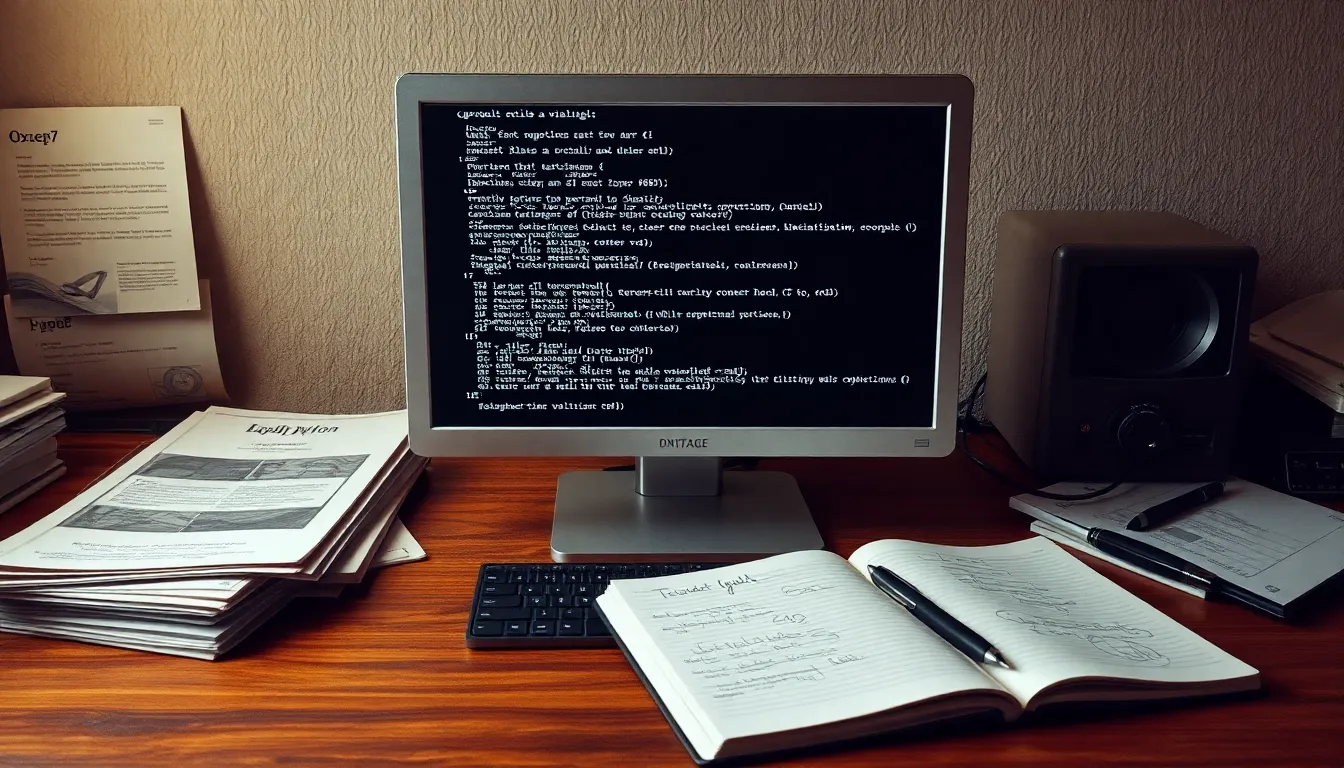In the ever-evolving world of programming, staying up to speed is crucial. If you’re still clinging to that old version of Oxzep7 Python, it’s time to let go and embrace the upgrade. Think of it like trading in your flip phone for the latest smartphone—sure, it worked fine, but you’re missing out on all the shiny new features.
Table of Contents
ToggleUnderstanding Oxzep7
Oxzep7 represents an older version of Python that has become less relevant in today’s programming landscape. Users relying on Oxzep7 miss out on critical updates and enhancements.
What Is Oxzep7?
Oxzep7 is a version of Python previously utilized for various applications. This version introduced fundamental features that supported early development needs. Its architecture laid the groundwork for later advancements, but it lacks the performance and security improvements present in newer releases. Notably, many libraries and frameworks no longer support Oxzep7, highlighting its diminishing utility.
Importance of Upgrading
Upgrading from Oxzep7 provides significant benefits, including increased security measures. Newer Python versions feature enhancements that ensure better performance and resource management. Developers experience improved functionality through access to modern libraries and tools. Staying current means leveraging the latest community support, which enhances collaboration and problem-solving. Furthermore, upgrading fosters innovation, allowing developers to implement advanced coding techniques and practices.
Steps to Upgrade Oxzep7 Python

Upgrading from Oxzep7 Python involves systematic steps to ensure a smooth transition. Users should follow careful procedures to minimize issues during the upgrade process.
Pre-Upgrade Preparations
Backup existing projects and files before proceeding. Reviewing current libraries and dependencies ensures compatibility with the new version. Testing existing code in the current environment helps identify potential issues. Documenting configurations provides a reference point for any required adjustments. Setting aside time for this preparation is crucial to a successful upgrade.
Performing the Upgrade
Use a package manager like pip or conda to initiate the upgrade process. Enter the command pip install --upgrade python for a straightforward upgrade. Confirm the installation has succeeded by checking the Python version with python --version. Update project dependencies using pip install -r requirements.txt for smooth functionality. Post-upgrade testing of applications ensures everything works as expected and addresses any issues that arise in the new version.
Post-Upgrade Considerations
After upgrading from Oxzep7 Python, users should conduct thorough tests to ensure functionality and compatibility. Testing the application identifies issues that might arise due to the upgrade.
Testing the Upgrade
First, run existing unit tests to confirm that code behaves as expected. Incorporate any new features introduced in the upgrade to enhance performance. Review compatibility with libraries and frameworks, as some may need updating. Automate testing whenever possible to streamline the process. Additionally, monitor application logs for error messages that indicate potential problems. Perform tests in various environments to ensure consistent behavior across systems. Address any discrepancies before moving to production deployment.
Troubleshooting Common Issues
Encountering issues after upgrading is common. Check for deprecated functions that may no longer work in the latest version. Review error messages carefully, as they often provide insight into what went wrong. It’s helpful to consult documentation for guidance on resolving specific issues. Search online forums and community resources for similar problems experienced by other users. Reverting to the previous version could be a temporary solution if critical functionality is lost. Regularly updating libraries can also prevent compatibility issues moving forward.
Best Practices for Maintaining Oxzep7
Maintaining Oxzep7 requires diligent practices to ensure stability and efficiency within projects using this version of Python.
Regular Updates
Regular updates play a crucial role in keeping Oxzep7 functioning optimally. They provide access to the latest patches and improvements, even for older versions. Developers should check for updates from the Python community periodically, addressing any security vulnerabilities that may arise. Staying informed about updates for libraries used in conjunction with Oxzep7 helps maintain compatibility and functionality. Implementing a consistent schedule for reviewing available updates creates a proactive approach to management. This habit reduces the likelihood of encountering major issues that could disrupt project timelines. Each update can bring performance enhancements and new features, allowing developers to leverage available resources effectively.
Monitoring Performance
Monitoring performance remains essential for projects relying on Oxzep7. Regularly assessing application speed and resource utilization provides insights into potential inefficiencies. Developers can utilize profiling tools specific to Python to gather detailed metrics about the code. Identifying bottlenecks early ensures that applications run smoothly, ultimately enhancing user experience. Incorporating logging mechanisms allows tracking of errors and unusual behavior, which can indicate deeper issues within the codebase. Given that some libraries may no longer support Oxzep7, monitoring their performance becomes even more critical. Adjustments based on monitoring data can lead to improved functionality and better resource management throughout the project’s lifecycle.
Upgrading from Oxzep7 Python is a crucial step for developers looking to stay relevant and efficient in today’s fast-paced programming environment. By embracing newer versions, users unlock a wealth of features that enhance security and performance while gaining access to a vibrant ecosystem of libraries and community support.
It’s essential to approach the upgrade process methodically, ensuring that existing projects are backed up and tested for compatibility. Regular maintenance of any version, including Oxzep7, remains important for optimal performance. By prioritizing upgrades and best practices, developers can foster innovation and maintain a competitive edge in their coding practices.








